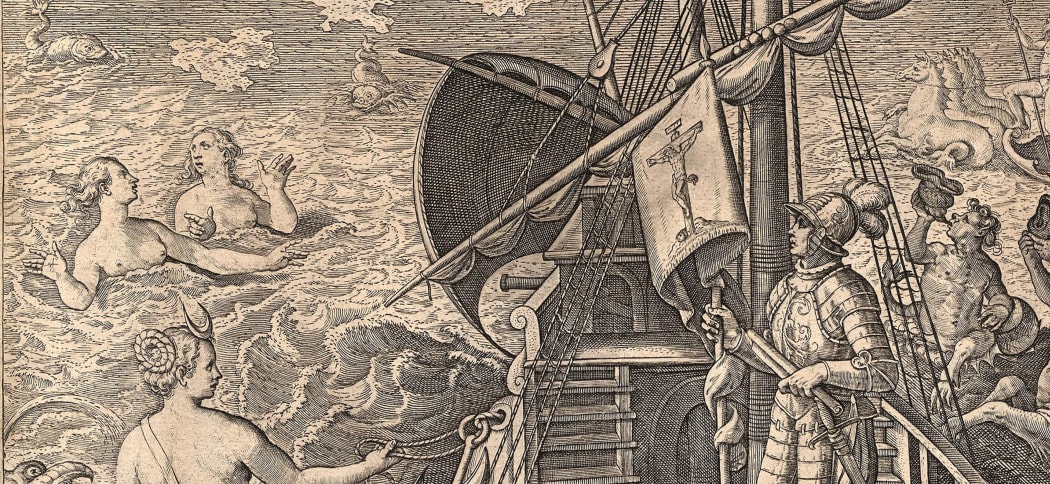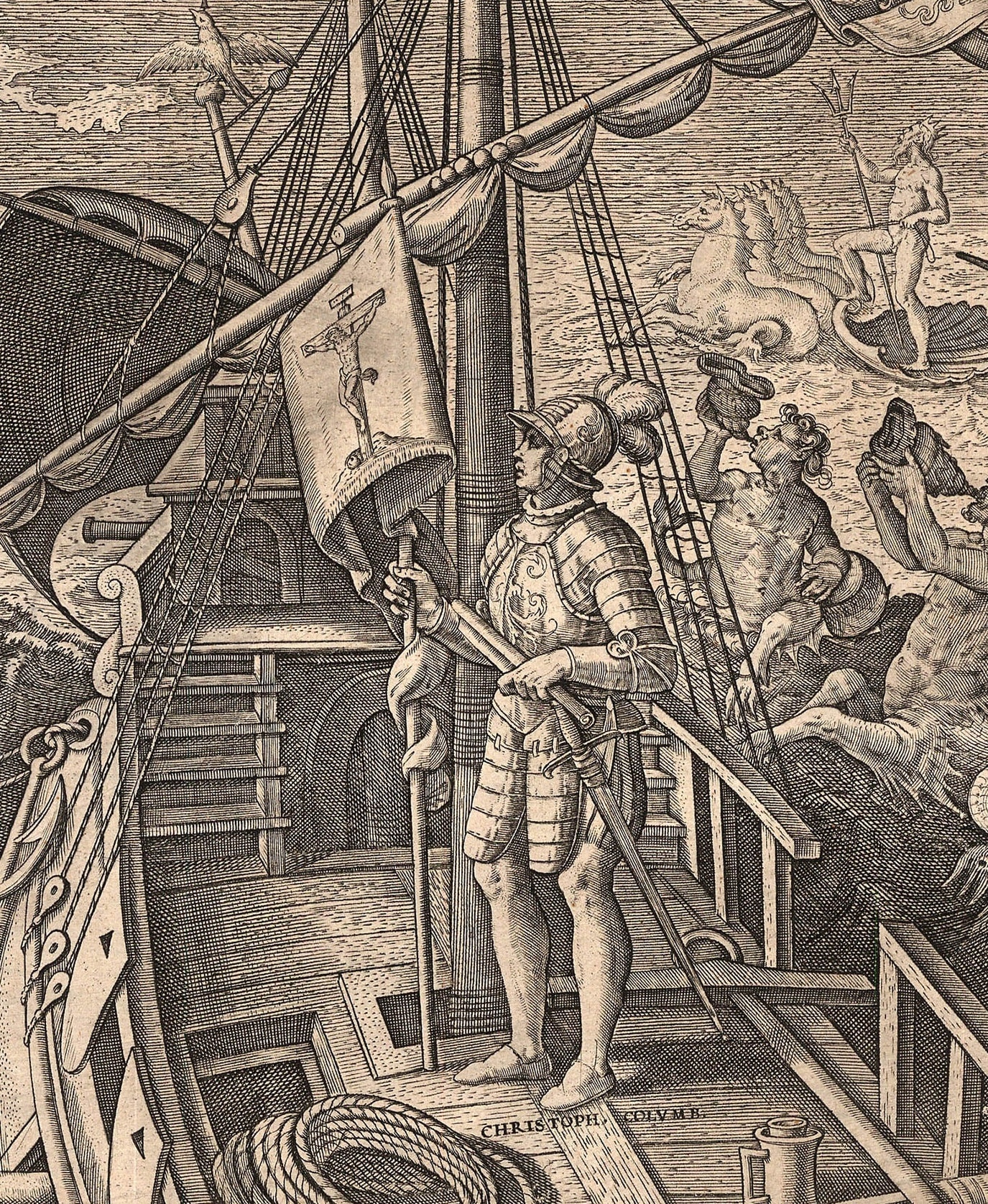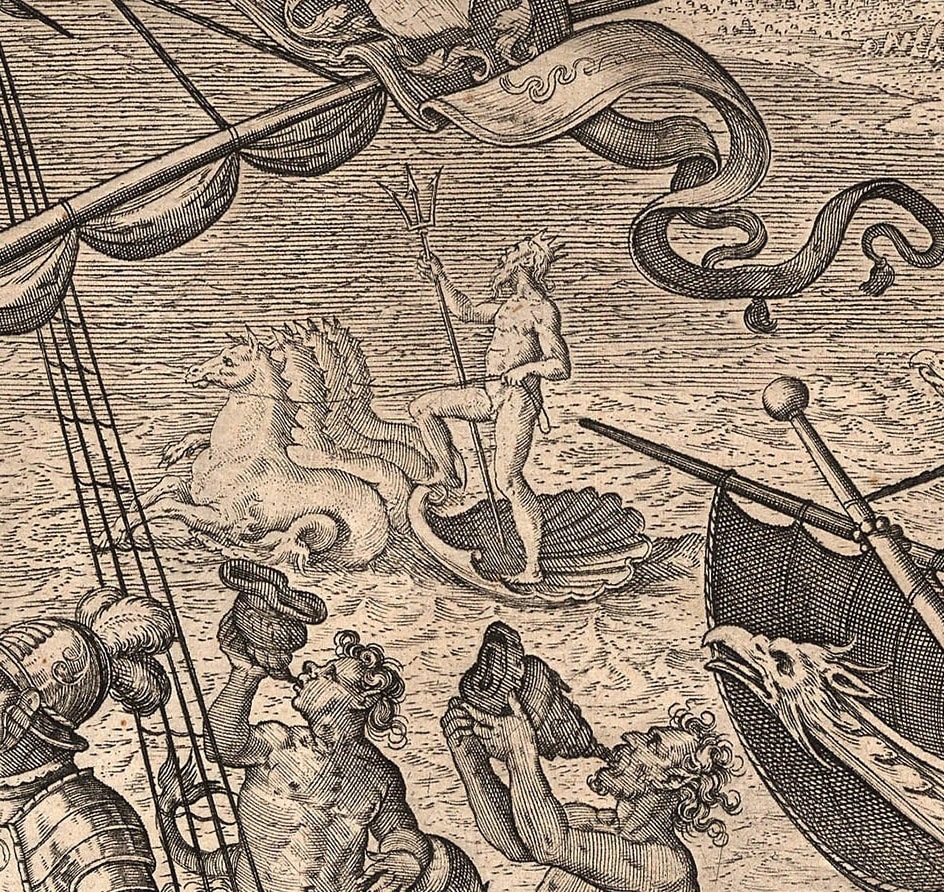
This exquisite piece, engraved by Adriaen Collaert and designed by Johannes Stradanus, was published in Florence c.1600. A tribute to Christopher Columbus, it praises his accomplishments and illustrates the 1492 endeavour to the New World that changed the course of history.
The text running along the lower margin translates; ‘Christopher Columbus of Liguria, overcoming the terrors of the ocean, added to the Spanish crown with regions of almost another world that he discovered[1].’
Armour clad upon his caravel, and clutching the papal banner, Columbus presents not just himself but the Castile crown in its quest for empire, prestige and power.
Though arguably a pictorial scene, a map of three islands and a coastline can be made out across the horizon. We would imagine these to be Cuba, Jamaica and Hispaniola in front of the American mainland.
Fanciful sea creatures of this unknown world fill the ocean alongside a number of more famous figures. In the background Neptune rides a chariot pulled by three sea-horses and to the lower left corner Diana stands in shallow water, signifying land fall. Their presence indicates support, suggesting that they have assured Columbus’s safe passage.
It is strange to use such recognisable pagan idols alongside Christian ones. The image of the crucified Jesus on the Papal banner, and the Holy Ghost to the tip of the Bowsprit, leave Columbus to complete the trinity. This juxtaposition suggests an imperial European desire to not just conquer new land but also for Catholicism to prevail.
Due to contemporary maps such as this Schedel of the world, Columbus thought that by sailing west he would still reach the East and its profitable Spice Islands without having to sail around the coast of Africa. When he found land in 1492 he celebrated a new passage to the eastern coast of Asia, not the discovery of America. To his death bed he was still convinced of this.
Taken from the publication, ‘Americae Retectio’, this map is one of three celebrating the European discovery of America. The additional two plates depict Vespucci and Magellan aboard their respective ships.
[1] Translation by Donald A. Heald
About the author
The Map House












